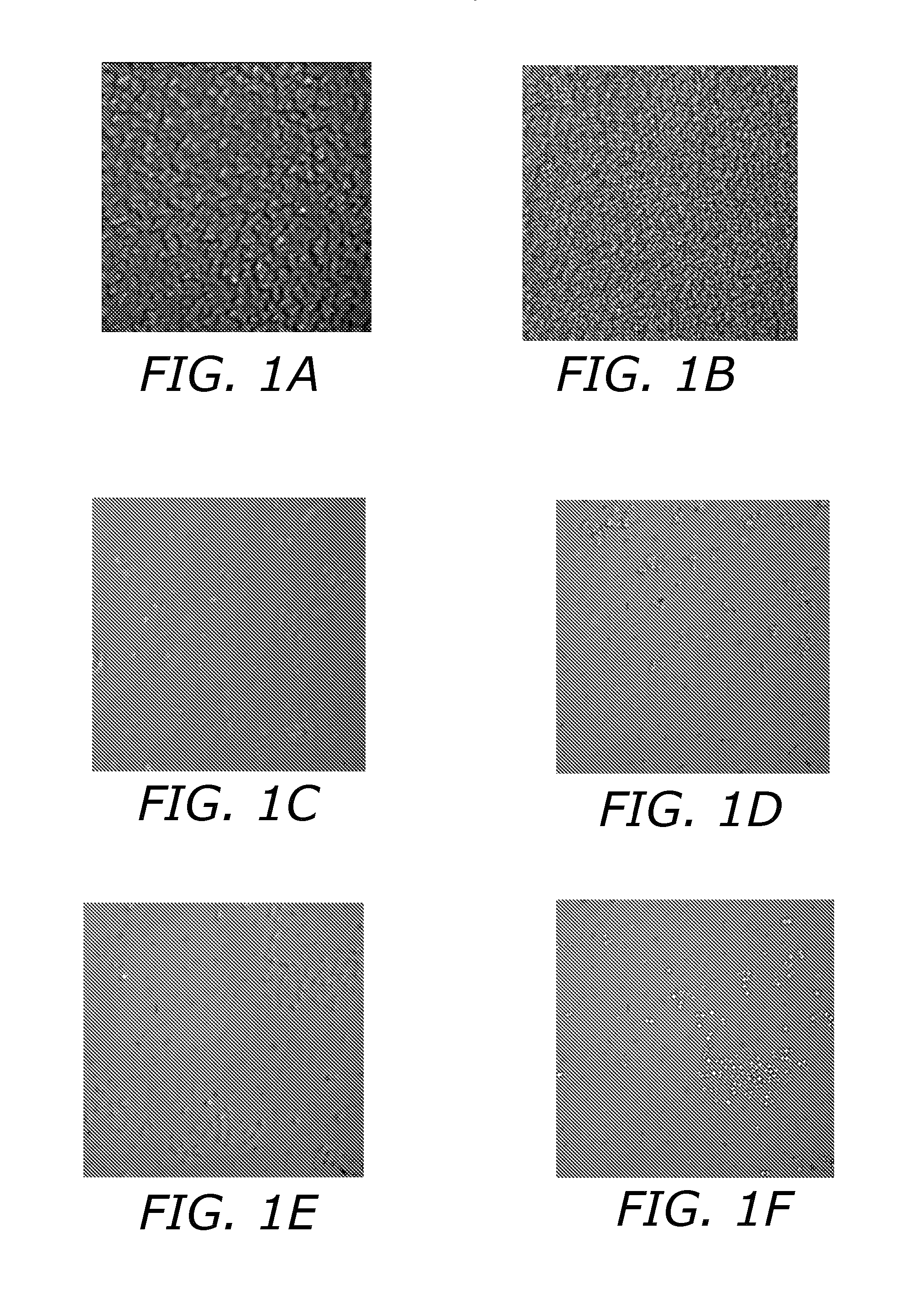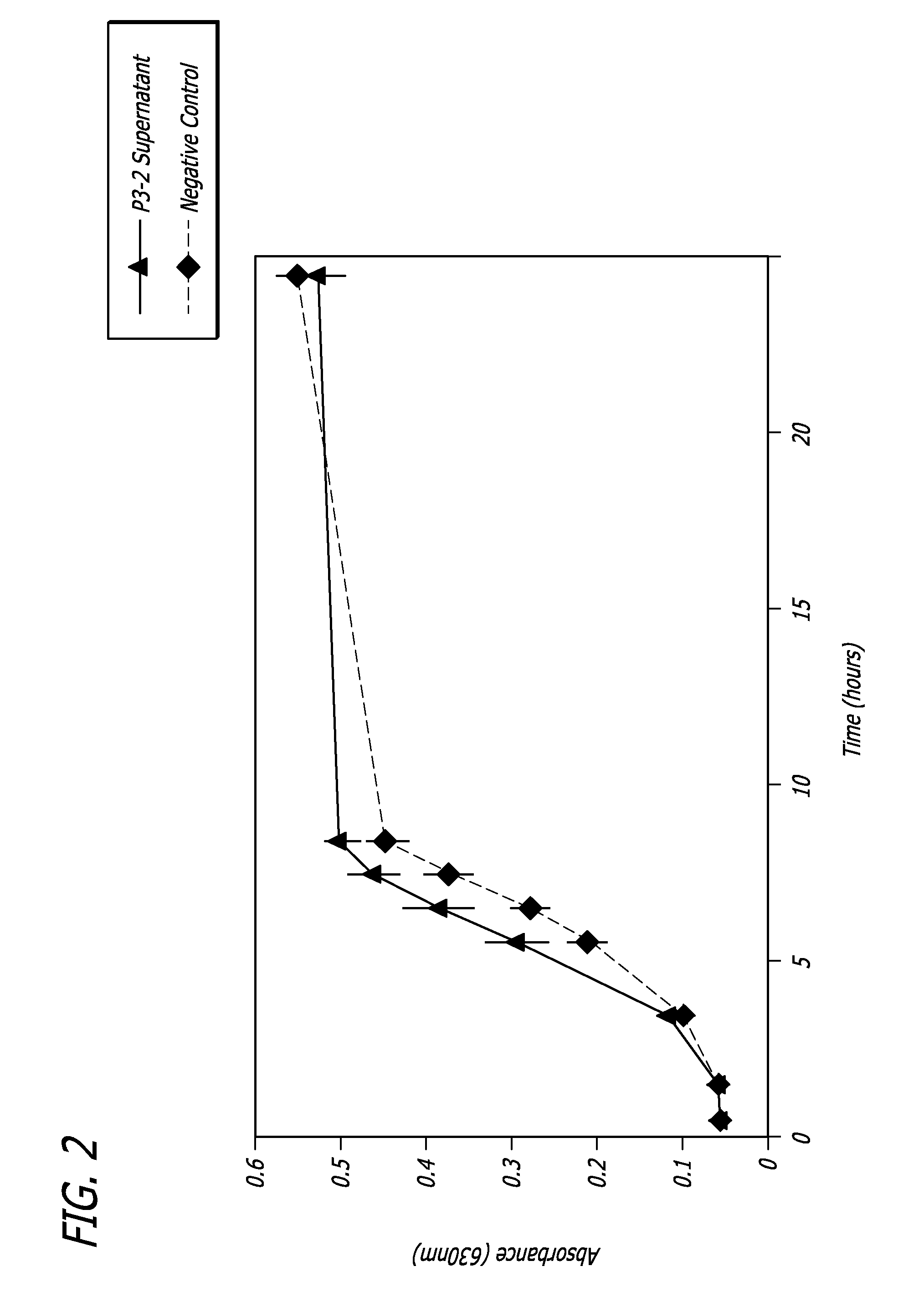Marine bacterial substances, medical devices, and methods for biofilm inhibition
a technology of marine bacteria and substances, applied in the field of marine bacterial substances, medical devices, and methods, can solve the problems of increasing hospital duration, cost and patient, multi-drug resistance remains a major public health threat, affecting the survival of patients, and preventing critical treatment, etc., to inhibit the growth or formation of biofilms.
- Summary
- Abstract
- Description
- Claims
- Application Information
AI Technical Summary
Benefits of technology
Problems solved by technology
Method used
Image
Examples
example 1
Inhibition of Biofilm Formation using Marine Bacterial Substances
[0035]Isolation of substances: Marine bacterial isolates P4-4, P5-2, and P6-6 can be cultured on Artificial Sea Water (ASW) media. ASW broth contained (g / l) of solution: NaCl 21.10, KCl 0.58, CaCl2×2H2O 1.20, MgCl2×6H2O 4.73, NaHCO3 0.08, MgSO4×7H2O 2.63, yeast extract 10.00, malt extract 4.00, and glucose 4.00, and agar 15.00. Plates were incubated at 29° C. Unless otherwise stated, marine isolate P3-2 is cultivated on Trypticase Soy Broth (TSB) (Difco) plus NaCl (30.0 g / L) and yeast extract (3.0 g / L) at 29° C.
[0036]The marine bacterial isolates were grown in flasks half filled with appropriate media. Cultures were incubated in a shaking incubator at 29° C. at 180 rpm. The supernatants were collected during the exponential and / or stationary stages of growth, determined by growth curve analysis. The cells were separated from the supernatant by centrifugation at 5,000 rpm and 10° C. for 5 minutes in 50 ml centrifuge tub...
example 2
Mutagenicity of Marine Bacterial Substances
[0045]Genotoxicity was determined for P3-2 exponential and stationary phase supernatants according to the Ames test (Ames et al., (1973) Proc Nat Acad Sci USA 70: 782-786.) with three auxotrophic Salmonella enterica strains (previously S. typhimurium) (ATCC 29629, ATCC 29630, ATCC 29631) obtained from the ATCC (Manassas, Va.). The results were considered positive if the number of revertants were at least twice as high as the negative control. P3-2 exponential (n=2) and stationary phase (n=4) supernatants reverted the three S. enterica mutant strains the same as or less than the negative control (n=2) (Table 3). Therefore, the Ames test results were negative. P3-2 exponential and stationary phase supernatants were determined to be free from genotoxins according to the Ames test.
TABLE 3Ames test results for P32 exponential and stationaryphase supernatants.Average number of revertants ± SDExperimentalS. entericaS. entericaS. entericaconditionA...
example 3
Non-Killing Nature of Marine Bacterial Substances
[0046]Antibacterial Activity: To determine if the substances have antibacterial properties the Kirby Bauer Method was used (Bauer et al., (1966) Am J Clin Pathol 45: 493-6.). Extract / supernatant (10 μl or 20 μl) was used to inoculate sterile 6mm disks (Difco). Disks containing 20 μl were prepared first by adding 10 μl, allowing disk to dry and then adding an additional 10 μl. Zones were measured after 24 hours of incubation at 37° C. The experiments were performed in triplicate. Penicillin (IU / IE / UI) was used as a positive control. Samples were considered to contain antibacterial activity if the diameter of the zone of clearance was within the sensitive range for penicillin (which is greater than or equal to 29 mm). None of the marine bacterial supernatants or extracts resulted in antibacterial activity against S. aureus, S. epidermidis, or P. aeruginosa.
[0047]Growth Curve Analysis: The antibiofilm compositions and substances of the ...
PUM
| Property | Measurement | Unit |
|---|---|---|
| pH | aaaaa | aaaaa |
| diameter | aaaaa | aaaaa |
| temperature | aaaaa | aaaaa |
Abstract
Description
Claims
Application Information
 Login to View More
Login to View More - R&D
- Intellectual Property
- Life Sciences
- Materials
- Tech Scout
- Unparalleled Data Quality
- Higher Quality Content
- 60% Fewer Hallucinations
Browse by: Latest US Patents, China's latest patents, Technical Efficacy Thesaurus, Application Domain, Technology Topic, Popular Technical Reports.
© 2025 PatSnap. All rights reserved.Legal|Privacy policy|Modern Slavery Act Transparency Statement|Sitemap|About US| Contact US: help@patsnap.com


